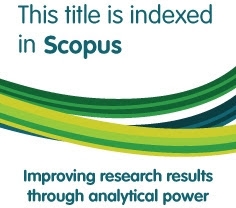Al-Ḥarakāt al-munāhaḍah li al-mashāyikh wa al-‘ulamā’ al-ḥumr fī Priangan: al-Ittiḥād al-akhḍar 1920-1949 namūdhajan
Abstract
The Islamic designation such as kiai or red ulema was used by supporters of The Green Association (SH) aimed at the elite of Islam who were labelled as communist or People’s Union (SR) and Indonesian Communist Party (PKI) activists. Giving a “red” label to the ulema was an effort to criminalize SH’s kiai and religious scholars supporting Islamic Association (SI) and it was considered harmful to the government authority. SH’s collective actions have succeeded enough in preventing the spread of Communism in the Priangan’s aristocrat community. Those actions were also managed to remove the sympathizers of the SI from the body of government’s bureaucracy. Yet, SH’s attempts to criminalize kiai and religious scholars using “red” label has failed. Even followers of the crime victim’s kiai had been increased, including the organization such as Al-Ittihadiyatul Islamiyyah (AII). Started from 1930s, SH’s collective actions started to decline until they completely disappeared.
Keywords
Full Text:
PDFReferences
ARA – Mailr. Geheim No.376/28.
ARA – Mailr. Geheim No.953 geh/37.
ARA-Mailr. Geheim No.679x/28.
Arsip Nasional Republik Indonesia. 1981. Laporan-Laporan Tentang Gerakan Protes Di Jawa Pada Abad – XX. Jakarta: Arsip Nasional Republik Indonesia.
Bachtiar, Harsja W. 1973. “The Religion of Java: A Commentary Review.” Majalah Ilmu-Ilmu Sastra 5(1).
Bahar, Saafroedin, and Nannie Hudawati. 1998. Risalah Sidang Badan Penyelidik Usaha-usaha Persiapan Kemerdekaan Indonesia (BPUPKI), Panitia Persiapan Kemerdekaan Indonesia (PPKI), 28 Mei 1945-22 Agustus 1945. Jakarta: Sekretariat Negara Republik Indonesia.
“Balatentara Islam.” 1924. No. 5, 27 Desember 1924.
———. 1925a. No. 9, 24 Januari 1925.
———. 1925b. No. 4, 13 Desember 1924.
———. 1925c. 21 Maret 1925.
“Bendera Islam.” 1926a. No. 9, 9 Februari 1926.
———. 1926b. No. 11, 12 Maret 1925.
Blumberger, John Theodoor Petrus. 1987. De Nationalistische Beweging in Nederlandsch-Indië. Dordrecht: Foris.
Dhofier, Zamakhsyari. 1994. Tradisi Pesantren: Studi tentang Pandangan Hidup Kyai. Jakarta: LP3ES.
Ensering, Els. 1982. “De Ontdekking van de Afdeeling B van de Sarekat Islam als een Case Study in de Lokale Gescheidenisvan de Preaanger Regentschappen.” Doctoraal Scriptie. Universiteit van Amsterdam – Antropologisch-Sociologisch Centrum.
Geertz, Clifford. 1959. “The Javanese Kijaji: The Changing Role of A Cultural Broker.” Comparative Studies in Society and History: An International Quarterly 2(2): 228.
———. 1981. Abangan, Santri, Priyayi dalam Masyarakat Jawa. Jakarta: Pustaka Jaya.
Horikoshi, Hiroko. 1987. Kyai dan Perubahan Sosial. Jakarta: Perhimpunan Pengembangan Pesantren dan Masyarakat (P3M).
Iskandar, Mohammad. 2001. Para Pengemban Amanah: Pergulatan Pemikiran Kiai dan Ulama di Jawa Barat, 1900-1950. Yogyakarta: MataBangsa.
“Kaoem Moeda.” 1920. No. 27, 9 Februari 1920.
———. 1924a. No. 8, 10 Januari 1924.
———. 1924b. 31 Januari 1924.
———. 1925a. No. 192, 26 Agustus 1925.
———. 1925b. No. 186, 19 Agustus 1925.
———. 1925c. No. 28, 3 Februari 1925.
———. 1925d. No. 29, 4 Februari 1925.
Koninklijk Instituut Voor Taal – Land En Volkenkunde (KITLV). R.A. Kern Collection.
Lubis, Nina H. 1998. Kehidupan Kaum Ménak Priangan, 1800-1942. Bandung: Pusat Informasi Kebudayaan Sunda.
Malaka, Tan. 1926. Semangat Muda. Tokyo.
McVey, Ruth Thomas. 2006. The Rise of Indonesian Communism. Jakarta: Equinox Publishing.
Moertono, Soemarsaid. 2009. State and Statecraft in Old Java: A Study of the Later Mataram Period, 16th to 19th Century. Kuala Lumpur: Equinox Publishing.
“Njala.” 1925a. No.52, 5 Desember 1925.
———. 1925b. No.13, 2 Oktober 1925.
———. 1925c. No. 35, 16 November 1925.
Noer, Deliar. 1980. Gerakan Modern Islam di Indonesia 1900-1942. Jakarta: LP3ES.
“Perbintjangan.” 1936a. No. 84, 10 November 1936.
———. 1936b. No. 54, 3 Oktober 1936.
———. 1936c. No. 56, 6 Oktober 1936.
———. 1937. No. 99, 5 Mei 1937.
Poesponegoro, Marwati Djoened, and Nugroho Notosusanto. 2008. Sejarah Nasional Indonesia: Zaman Kebangkitan Nasional dan Masa Hindia Belanda. Jakarta: Balai Pustaka.
Ricklefs, M.C. 2012. Islamisation and Its Opponents in Java: A Political, Social, Cultural and Religious History, C. 1930 to the Present. Singapore: NUS Press.
“Sapoedjagat.” 1924. 15 Januari 1924.
Sutherland, Heather. 1975. “The Priyayi.” Indonesia 19: 57–77.
DOI: https://doi.org/10.15408/sdi.v24i2.5019 Abstract - 0 PDF - 0
Refbacks
- There are currently no refbacks.

All publication by Studia Islamika are licensed under a Creative Commons Attribution-NonCommercial 4.0 International License.
Studia Islamika, ISSN: 0215-0492, e-ISSN: 2355-6145
View My Stats
